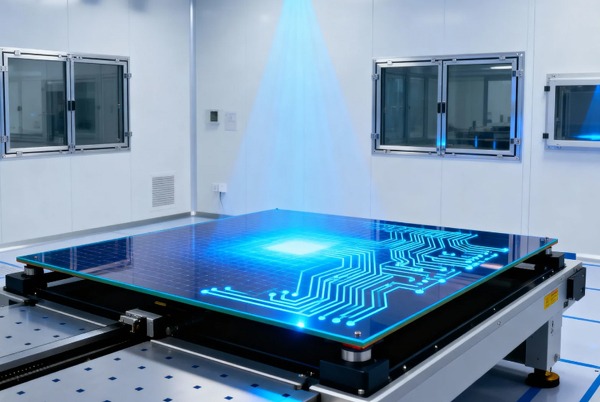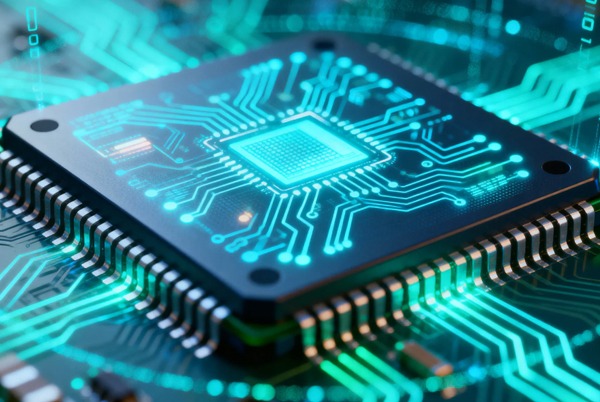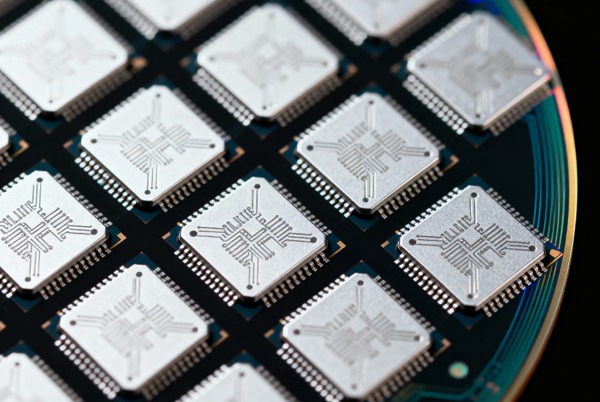Table of Contents
What is an Integrated Circuit?
An integrated circuit is a miniature electronic device manufactured using specific semiconductor processes that integrate electronic components such as transistors, resistors, capacitors, diodes, and their interconnecting pathways onto a single semiconductor wafer or dielectric substrate. These components are structurally formed into a complete whole, and after packaging, become a miniature structure with specific circuit functions.
Externally, an integrated circuit typically appears as a small packaged block with multiple pins, yet inside lies an incredibly complex microcosm. In circuit diagrams, integrated circuits are usually represented by symbols such as “IC” or “N”.
How Do Integrated Circuits Work?
Basic Operating Principles
The foundation of integrated circuit operation lies in semiconductor properties and the principle of electric field control. Simply put, they process, store, and transmit information by controlling the switching states of millions or even billions of transistors within the chip.
Core Workflow:
- Signal Input: External electrical signals enter the integrated circuit via input pins.
- Internal Processing: Transistors inside the chip amplify, compute, or convert the signals according to the designed logic.
- Result Output: The processed signals are transmitted to other circuit components through output pins.
Hierarchical Structure Understanding
To better understand integrated circuits, we can adopt a top-down hierarchical structure:
- System Level: Complete electronic device system (e.g., a smartphone)
- Module Level: Functional modules within the system (e.g., power management, signal processing)
- Register-Transfer Level (RTL): Composed of registers and combinational logic circuits
- Gate Level: Basic logic gate circuits (AND, OR, NOT gates, etc.)
- Transistor Level: The most basic semiconductor switching units
Transistors: The Core Elements of Integrated Circuits
Transistors are the fundamental building blocks of integrated circuits, mainly divided into:
- Bipolar Junction Transistors (BJT): Used more frequently in early stages, with higher power consumption
- Metal-Oxide-Semiconductor Field-Effect Transistors (MOSFET): Mainstream in modern ICs, low power consumption, high integration density
By combining transistors into various logic gates and then connecting these logic gates into complex circuits through multi-layer interconnection technology, powerful processing capabilities are ultimately achieved.

Classification System of Integrated Circuits
Classification by Function and Structure
- Analog Integrated Circuits: Process continuously varying analog signals
- Digital Integrated Circuits: Process discrete digital signals
- Mixed-Signal Integrated Circuits: Process both analog and digital signals simultaneously
Classification by Integration Level
- SSIC: Small-Scale Integration (10-100 components)
- MSIC: Medium-Scale Integration (100-1,000 components)
- LSIC: Large-Scale Integration (1,000-10,000 components)
- VLSIC: Very Large-Scale Integration (10,000-100,000 components)
- ULSIC: Ultra Large-Scale Integration (100,000-1 million components)
- GSIC: Giga-Scale Integration (over 1 million components)
Classification by Application Field
- General-Purpose Integrated Circuits: Standard circuits suitable for various applications
- Application-Specific Integrated Circuits (ASIC): Circuits customized for specific applications
- System on a Chip (SoC): Integrates complete system functions onto a single chip
Manufacturing Process of Integrated Circuits
Integrated circuit manufacturing is one of the most complex industrial processes currently in use. The main steps include:
- Wafer Preparation: Slicing high-purity silicon cylinders into thin wafers
- Oxidation: Forming a silicon dioxide insulating layer on the wafer surface
- Photolithography: Transferring circuit patterns onto the wafer using photolithography machines
- Etching: Removing excess material to form circuit structures
- Ion Implantation: Altering the conductive properties of silicon
- Metallization: Adding interconnecting wires
- Testing and Packaging: Testing chip functionality and applying protective packaging
This process must be repeated dozens of times to construct complex three-dimensional structures at the nanoscale.
Packaging Forms of Integrated Circuits
Packaging not only protects the chip but also provides connections to external circuits:
- SOP: Small Outline Package, pins shaped like gull-wings
- PGA: Pin Grid Array, often used for microprocessors
- BGA: Ball Grid Array, high-density pin arrangement
- DIP: Dual In-line Package, traditional and widely used

Technical Characteristics and Advantages of Integrated Circuits
- Miniaturization: Compresses complex circuits into extremely small spaces
- Low Cost: Mass production significantly reduces unit cost
- High Performance: Short signal transmission paths enable high operating frequencies
- Low Power Consumption: Modern IC design emphasizes energy efficiency optimization
- High Reliability: Reduced external connection points enhance stability
Application Fields of Integrated Circuits
Integrated circuits have permeated every corner of modern technology:
- Consumer Electronics: Smartphones, televisions, digital products
- Computer Systems: CPUs, memory, storage controllers
- Communication Equipment: Base station chips, network processors
- Industrial Control: Sensors, automation controllers
- Automotive Electronics: Engine control, safety systems
- Medical Equipment: Diagnostic instruments, implantable devices
- Military and Aerospace: Radar, navigation, communication systems
Future Development Trends
As Moore’s Law gradually approaches its physical limits, integrated circuit technology is moving towards new directions:
- 3D Integration: Increasing integration density through vertical stacking
- New Material Applications: Exploration of new materials like carbon nanotubes, graphene
- Heterogeneous Integration: Integrating chips from different processes into a single package
- Quantum Computing: Entirely new computing paradigms based on quantum mechanics
- Neuromorphic Computing: Chip designs that mimic the working principles of the human brain
